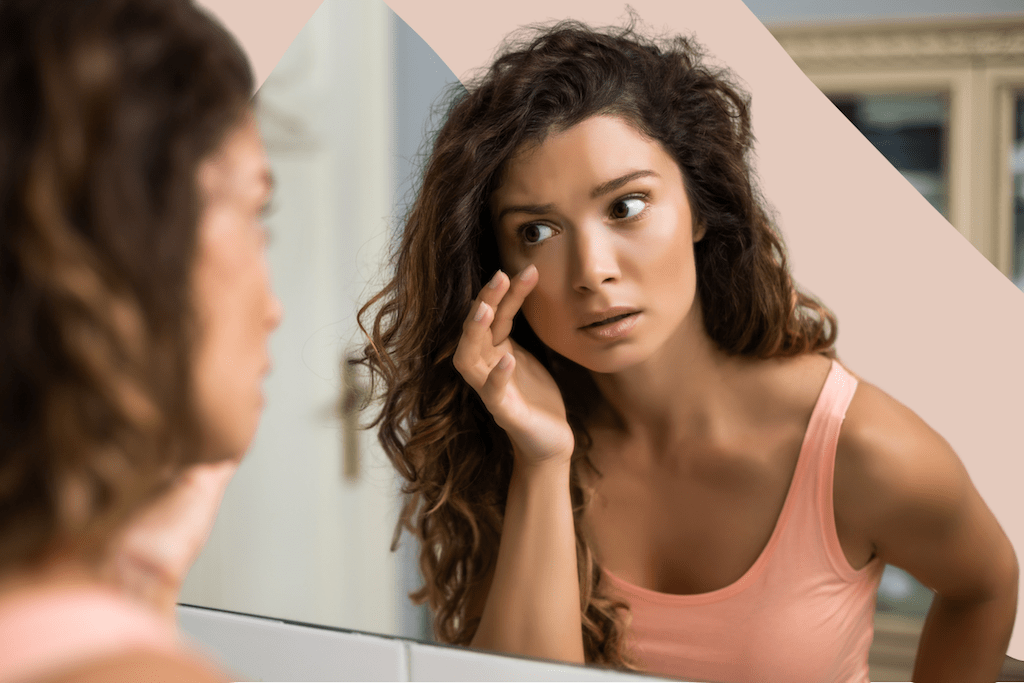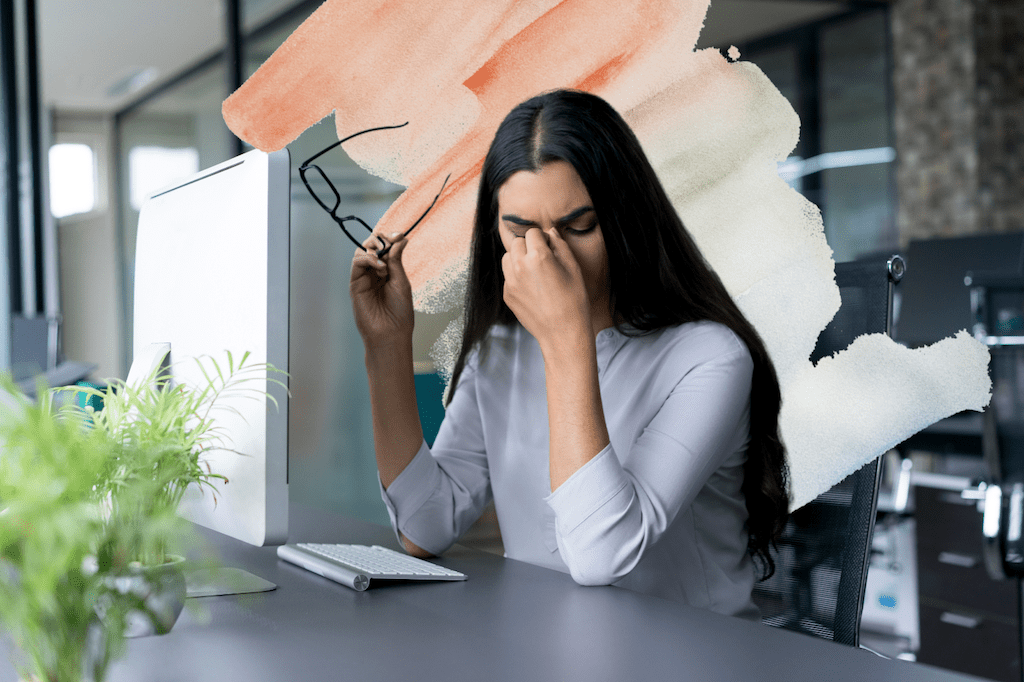Have you ever found yourself constantly wiping away tears from your eyes, wondering why do my eyes keep watering?
If you’re not chopping onions, listening to Self Control by Frank Ocean or having a staring contest with a leaf-tailed gecko, then it might be frustrating not knowing just why you’ve got tears in your eyes.
Indeed, watery eyes with no obvious catalyst can be an uncomfortable experience, interfering with your daily activities and making it difficult to focus on anything else. Not only is it annoying, but it may also be a sign of an underlying health condition that requires attention.
If you’re tired of dealing with watery eyes and want to find out what’s causing them, keep reading to learn about the possible reasons and how to alleviate the symptoms.
What Are Watery Eyes?
Tears play a crucial role in lubricating and protecting your eyes from irritants. They drain through your tear drainage system, which includes the nasolacrimal duct that connects your eyes to your nose.
However, for some people, the balance between tear production and drainage can be disrupted. This can lead to excessive tearing and watery eyes, which can cause a range of uncomfortable symptoms. These include blurred vision and eyelid irritation, as well as a soreness and itchiness which may lead to a worsening mood, quite frankly.
While watery eyes can affect anyone, it tends to be more common in children and older adults. It can also have a significant impact on your social life, as others may mistake your watery eyes for crying, leading to embarrassment and even social isolation.

What Can Cause Watery Eyes?
When it comes to watery eyes, dry eye syndrome is a common culprit, paradoxically leading to excessive tear production, especially when you’re outdoors.
However, other factors may also trigger watery eyes, such as an eye infection like conjunctivitis, foreign objects in the eye, allergies, particularly in those with hay fever or prolonged contact lens use, and malposition of the eyelid, such as entropion (inward-turning) or ectropion (outward-turning).
Let’s take a look at some of the most common causes of watery eyes, and some ways to treat them…
Allergies
Ah, allergies – nature’s way of reminding us that we can’t always have nice things. For many people, watery eyes are a telltale sign that their immune system has decided to wage war against seemingly harmless substances like pollen, dust, or pet dander. In response to these allergens, your body produces histamine, which in turn triggers symptoms like itching, redness, and you guessed it – watery eyes.
To keep those tear ducts in check, try over-the-counter antihistamines or eye drops designed specifically for allergy relief. If your eyes still resemble a leaky faucet, it might be time to consult an allergist for more targeted treatment options.
Dry Eyes
Ironically, one of the most common causes of watery eyes is actually dry eyes. When your eyes don’t produce enough tears or the right kind of tears to keep them lubricated, they may become irritated and signal your body to produce more tears as a protective mechanism. It’s like your eyes are throwing a tear party and everyone’s invited!
To combat dry eyes, consider using artificial tears or lubricating eye drops. Additionally, taking breaks from staring at screens, wearing sunglasses to protect your eyes from wind and sun, and staying hydrated can help alleviate dry eye symptoms. If your eyes continue to feel like the Sahara Desert, consult an eye care professional for further evaluation.

Blocked Tear Ducts
Tears are essential for keeping our eyes clean and healthy. They’re produced by the lacrimal glands and then travel across the surface of the eye before draining through the tear ducts into the nasal cavity. However, sometimes these tear ducts become blocked or don’t function properly, leading to a backup of tears and subsequent watery eyes.
For mild cases of blocked tear ducts, you can try gently massaging the area near the inner corner of your eye to help promote drainage. If the problem persists or is accompanied by pain, redness, or swelling, it’s time to see an eye doctor who may recommend treatments such as tear duct probing, balloon catheter dilation, or surgery in more severe cases.
Infections
Infections, whether bacterial, viral, or fungal, can cause inflammation and irritation in the eyes, leading to an overproduction of tears. Conjunctivitis, also known as pink eye, is one of the most common culprits behind watery eyes. This contagious infection can leave your eyes red, itchy, and swimming in tears.
To evict these unwelcome guests from your eyes, treatment will depend on the type of infection. Bacterial infections typically require antibiotic eye drops, while viral infections may simply need time to run their course. For fungal infections, antifungal medication is often prescribed. Remember to practise good hygiene and avoid sharing personal items like towels and makeup to prevent the spread of infections.
Irritants
Sometimes, our eyes encounter substances that they simply cannot tolerate – think smoke, chemicals, or even excessive amounts of makeup. These irritants can cause your eyes to become inflamed and watery as they attempt to flush out the offending particles.
To avoid turning your eyes into a watery mess, try to steer clear of known irritants whenever possible. If you must be around them, consider wearing protective eyewear or using lubricating eye drops to help minimise discomfort. And remember, if your eyes are already irritated, resist the urge to rub them – this can make matters worse!
Read: Why do your eyes look tired?
How Are Watery Eyes Diagnosed?
During a consultation with an oculoplastic surgeon, a comprehensive examination and assessment of the patient’s watering eye are conducted. The surgeon begins by taking a detailed medical history, focusing on factors such as blepharitis or dry eyes, allergies, eye drops, drugs, and trauma that could be contributing to the problem.
In addition, the patient’s history of nasal problems and sinusitis is considered, as this could lead to lacrimal duct narrowing and subsequent blockage, resulting in watering eyes.
Next, the surgeon conducts a thorough examination of the peri-orbital region, eyelids, and surface of the eye. Additional clinical tests are performed, which may involve using a simple orange-coloured dye called fluorescein, syringing and probing, and nasal endoscopic examination.
In rare cases, a special radiological examination called lacrimal scintigraphy may be required to determine the level of functional blockage in patients with a partial blockage of their nasolacrimal duct (functional nasolacrimal duct obstruction). A dacryocystogram or CT scan may also be necessary to examine the outline of the lacrimal sac and assess the orbital bones, nasolacrimal duct, and sinuses.
Syringing and probing the area under topical local anaesthesia can confirm any narrowing or obstruction causing the watering eye. A tiny drop of topical anaesthetic is first placed on the eyes, and the puncta (tiny openings) are gently dilated. A lacrimal cannula is then carefully passed along the canaliculus towards the lacrimal sac, which is not felt by the patient.
Saline solution is used to irrigate the duct, and the position and extent of the blockage are determined. This simple test can yield a lot of useful information about inflammation.
Nasal endoscopy is another test that is performed under local topical anaesthesia, with the patient sitting comfortably in the examination chair. A fine torch, called an endoscope, is used to look inside the nostril. From this position, the oculoplastic surgeon can diagnose any disease present and assess the suitability of the nasal space for DCR surgery. The surgeon can also determine if any other small procedures need to be done within the nose to assist the surgery.

How Can Watery Eyes Be Treated?
In most cases, watery eyes can be treated effectively with simple remedies such as eye drops, warm compresses, or anti-allergy medications if allergies are the root cause, as we mentioned earlier.
However, if the condition becomes chronic, surgical intervention may be necessary. Dacryocystorhinostomy (DCR) is the most common surgical procedure used to treat chronic watery eyes caused by a blockage in the tear drainage system.
During DCR surgery, the blocked tear duct is bypassed, allowing tears to drain into the nose as they did before the blockage occurred. This procedure is performed through the nose and offers the benefit of no visible scars on the face or nose.
The Bottom Line
Watery eyes can be a frustrating experience that affects people of all ages. However, it’s essential to understand that this condition can be a sign of an underlying health issue that requires attention. By understanding the causes of watery eyes and seeking help from an ophthalmologist or oculoplastic surgeon, you can alleviate the symptoms, maintain good eye health, and, ultimately, improve your quality of life.
Whether it’s seasonal allergies, dry eye syndrome, pink eye, or eyelid inflammation, there are effective treatments available to help you manage your watery eyes and keep them comfortable and healthy.
*Please note that this article is not meant to replace professional medical advice. Always consult with a healthcare professional before making any changes to your lifestyle or using any medication.*




